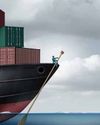The Chittagong Port Authority along with the Customs and off-dock workers are putting in a concerted effort to ease out movement of cargo.

All the banks at Chittagong Port have been directed to operate 24/7 along with the port authority and Customs; private ICDs that do not deliver quick and efficient services stand to lose their license; the Bangladesh Land Port Authority (MLPA) has been instructed to construct an alternative road for transportation of goods, while the port operates 24/7 to evacuate cargo; landlord port model will be introduced to reduce the port authority’s involvement in operations; the off-dock workers and the port authority will procure more equipment to facilitate swift movement of cargo. The ICDs will impose CFS cut-off time for exporters for sending export cargo so that the ICDs can maintain cut-off time for sending export laden containers to the Chittagong Port. The ICDs will send export laden containers to the port between berthing of vessel and six hours before their sailing. The ICDs will also try to take out import laden containers of their designated 37 items at the shortest possible time. Bids have been invited for erecting a specialised terminal to handle bulk cargoes at the port.
Chittagong Customs House has jumped into action dispatching 94 assistant revenue officers and nine assistant commissioners for supporting the exim operations 24/7. The CPA will provide an export yard of at least 1000 teus at the CCT (Chittagong Container Terminal) and at NCT (New Mooring Container Terminal) within a short time and will transfer 4,200 teus of containers meant for auction to the newly-built silo yard. It is to be noted that neither CCT nor NCT has any export yard at present for export containers to facilitate the ICDs to go directly to the vessels' hook point to load export containers onto vessels.
Denne historien er fra September 2017-utgaven av Maritime Gateway.
Start din 7-dagers gratis prøveperiode på Magzter GOLD for å få tilgang til tusenvis av utvalgte premiumhistorier og 9000+ magasiner og aviser.
Allerede abonnent ? Logg på
Denne historien er fra September 2017-utgaven av Maritime Gateway.
Start din 7-dagers gratis prøveperiode på Magzter GOLD for å få tilgang til tusenvis av utvalgte premiumhistorier og 9000+ magasiner og aviser.
Allerede abonnent? Logg på

Impact Of Covid-19 On Shipping And Logistics
Industry stalwarts discuss threadbare the prevailing logistics and supply chain scenario and issues in clearing cargo during the COVID-19 lockdown

Digital Platforms Defy Lockdown
Digital trading modules such as eNAM are enabling farmers to move their produce from farm to market even during the lockdown

GARMENT TRADE TRAMPLED
As retailers face a shutdown in US and Europe, the cascading affect has caused mass cancellation of orders in Bangladesh

TRADE RESUMES WITH CHINA
While India has allowed uninterrupted movement of imports into Nepal even during lockdown, China is reopening its borders as it emerges from the pandemic
LESS HUMAN INTENSIVE, MORE DATA DRIVEN
AI provides transformational opportunity for logistics industry by improving customer experience, operational efficiency, faster turnaround time and lower cost while ensuring security and transparency. Macro environment requires industry to transform to be less human intensive, agile and data driven, all of which can be accelerated by AI adoption, shares Gangadhar Gude, Founder & CEO, atai.ai

SHAKEN AND STIRRED
The COVID-19 pandemic has partially paralysed the logistics and supply chain, but the industry is still deterred to ensure supply of essentials continues

TRADE STUCK, ECONOMY SLOWS DOWN
Sri Lankan economy slows down as trade deficit widens and supply chain disrupts amidst lockdown

LENDING INTELLIGENCE TO SUPPLY CHAIN
If you’re shipping millions of dollars’ worth of pharmaceuticals, high-end electronics, expensive seafood, or precious metals, what would you be willing to pay for the ability to ‘ask’ your shipment where it is right now and whether it’s ok? What would you pay for a freight smart enough to raise an alarm before it spoils? Artificial Intelligence enables that and much more…

CONTAINER LINES SIGNAL ‘SOS'
As the per-unit cost of operations increases many lines are forced to blank sailings which has hit their bottom line real hard. The Government and Terminal Operators therefore need to actively consider reduction in Vessel Related Costs

IMO 2020 And The Covid-19 Curse
The COVID-19 outbreak has shaken and stirred the already volatile bunker market. While the refiners adjust their capacities and shipping lines choose their path to compliance, the market dynamics are yet to reach an equilibrium